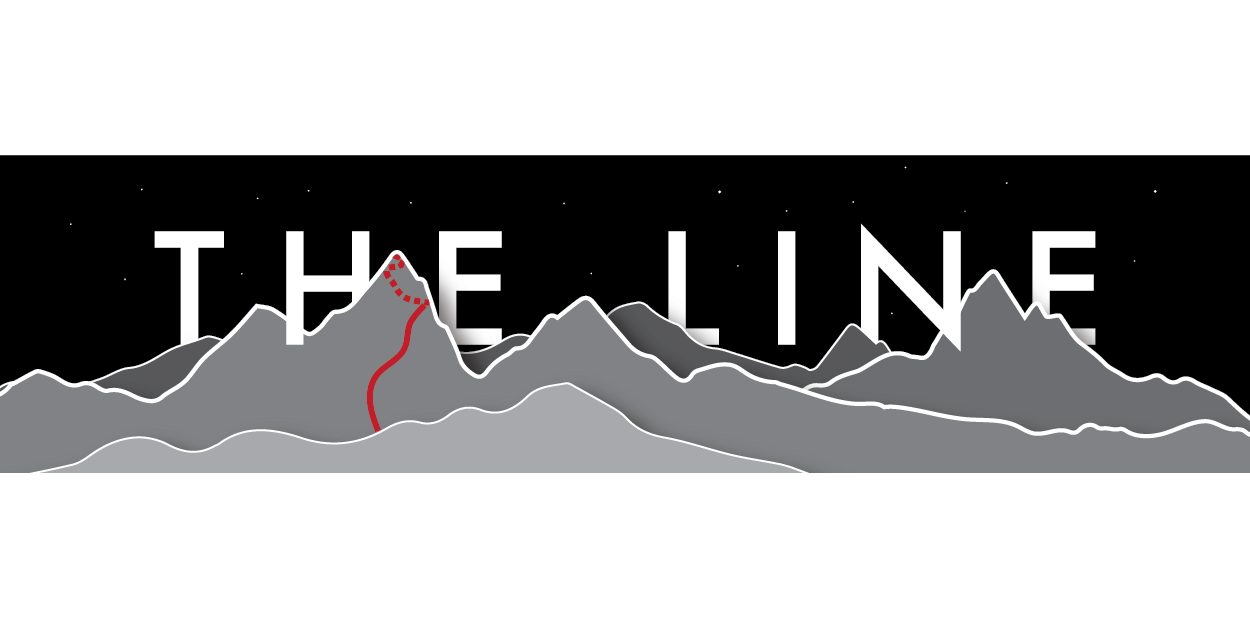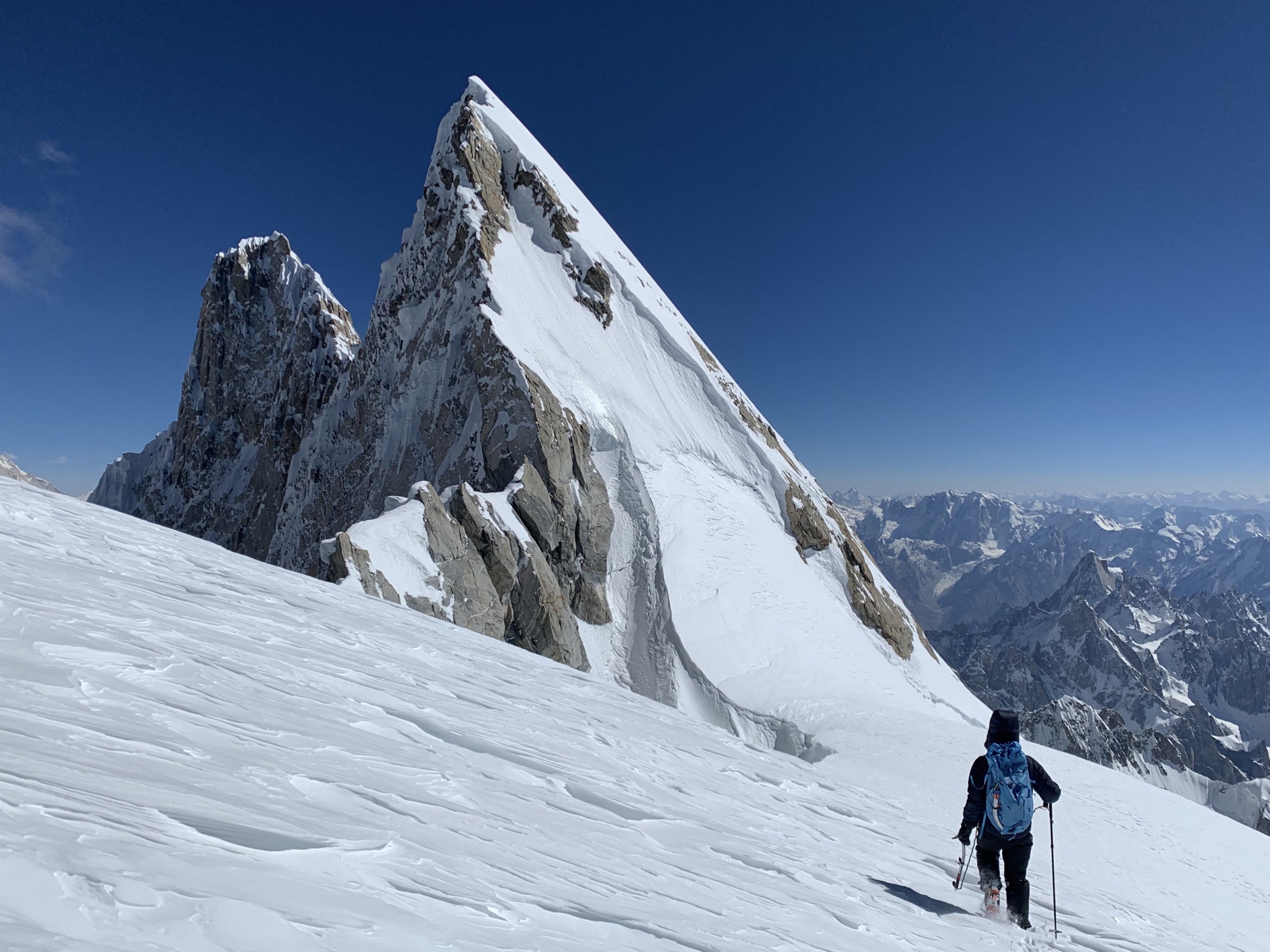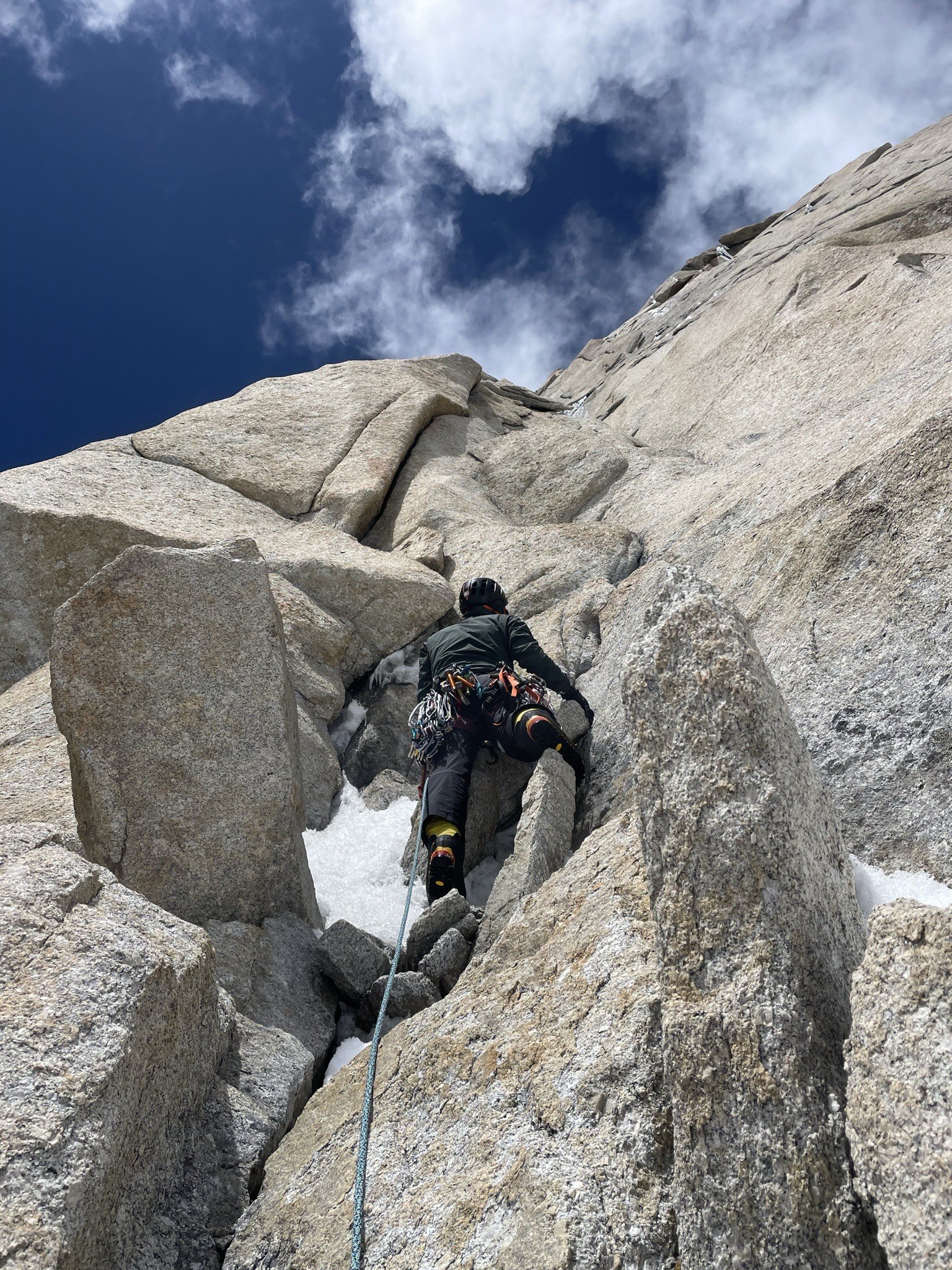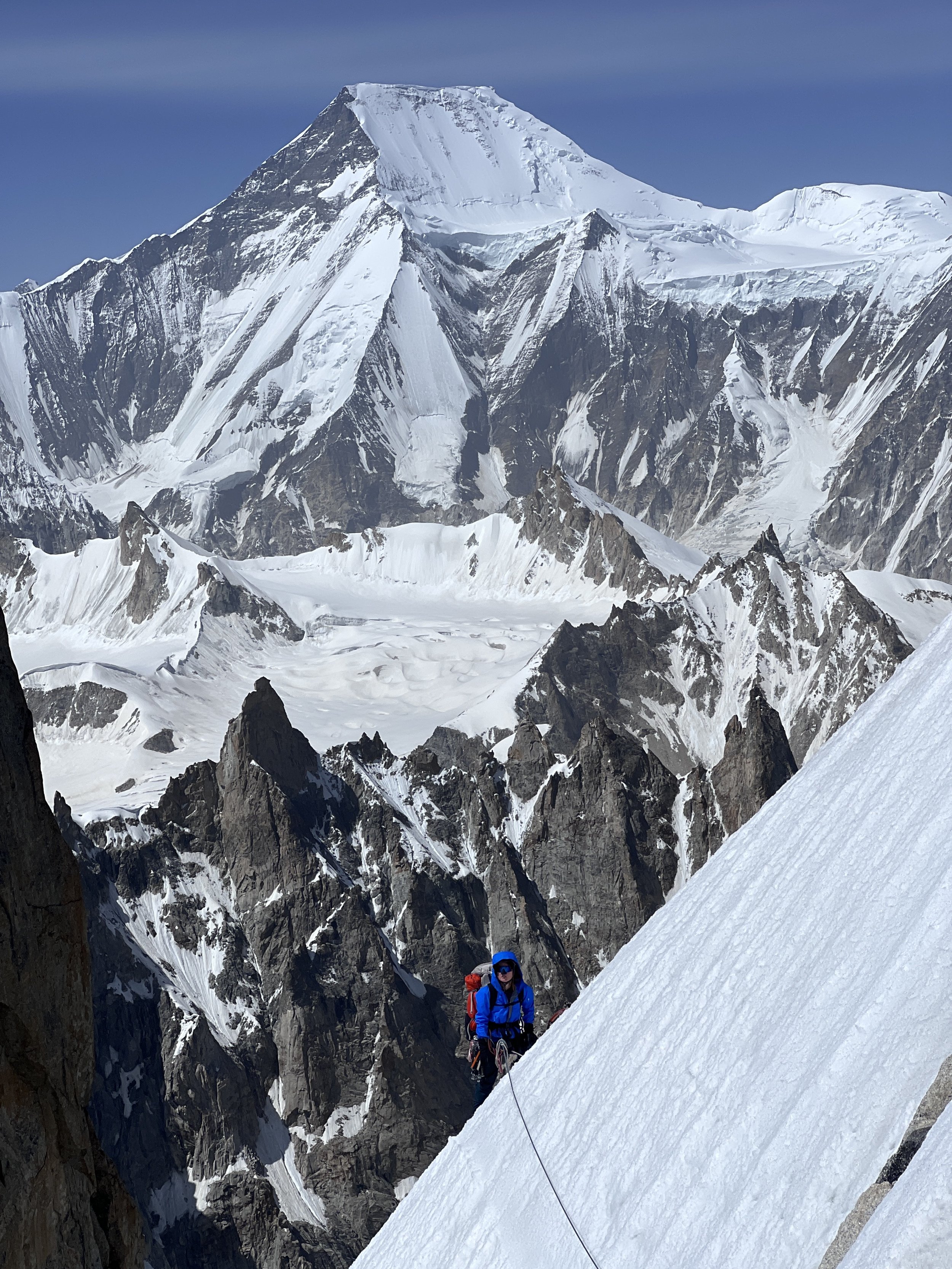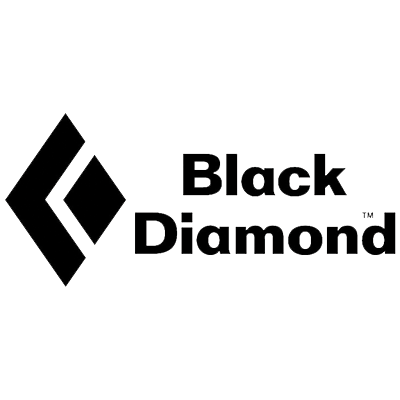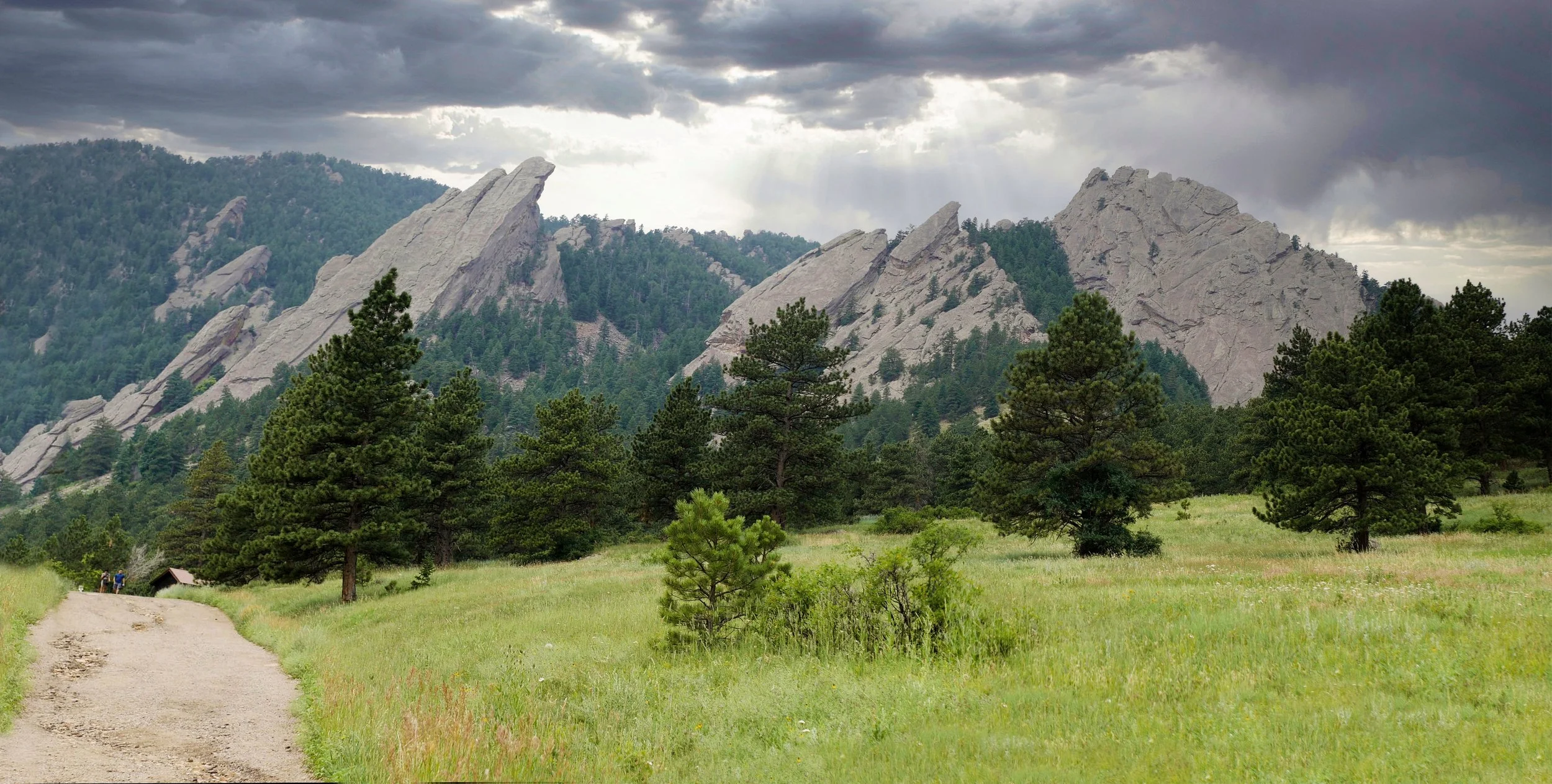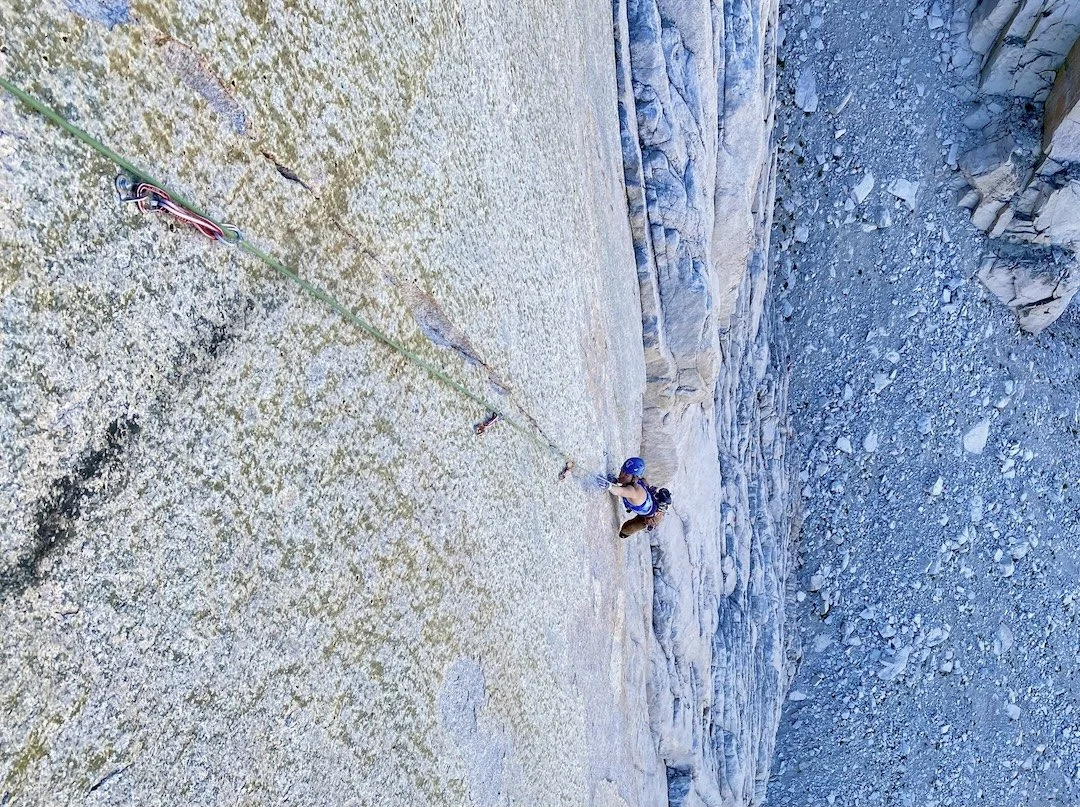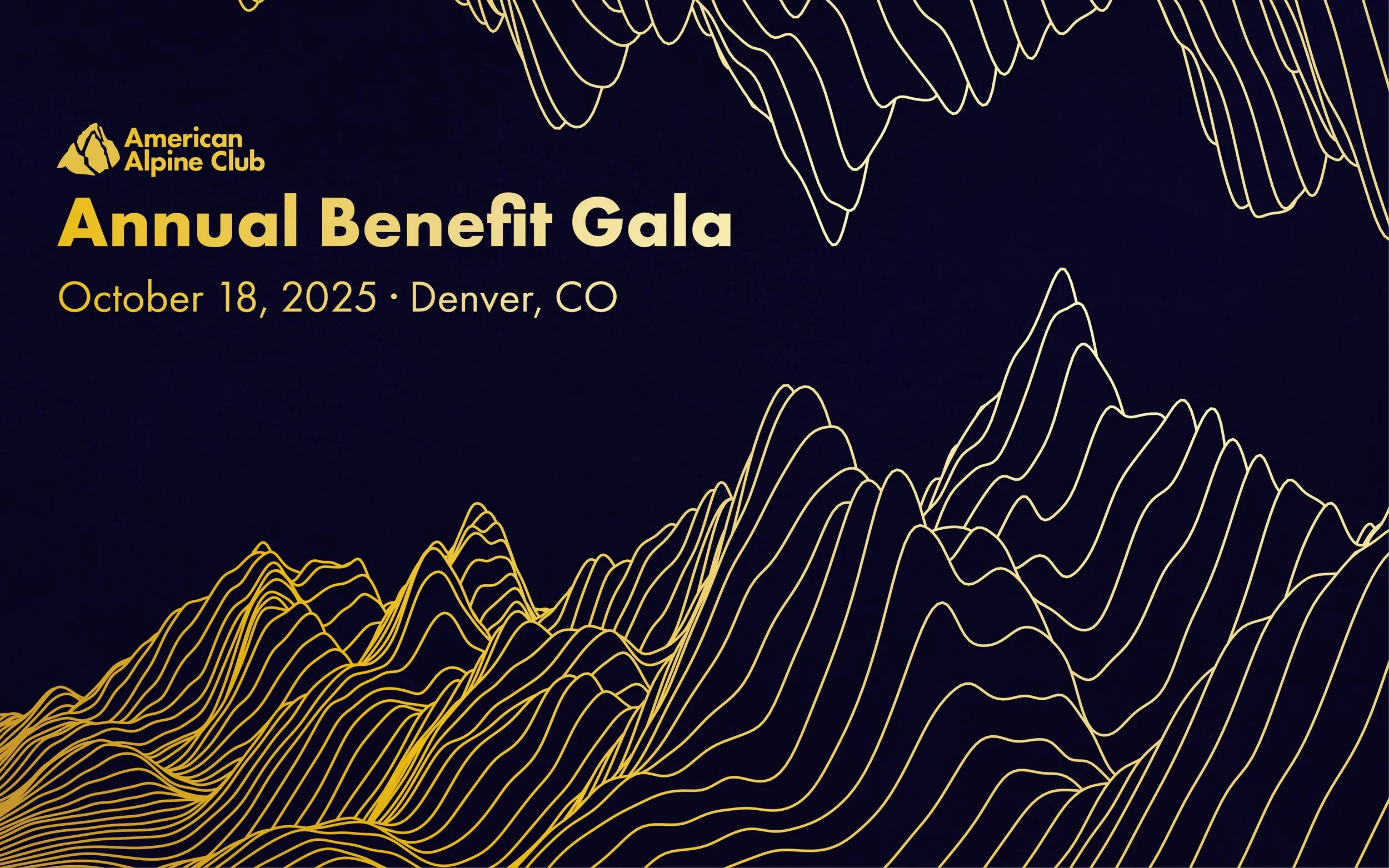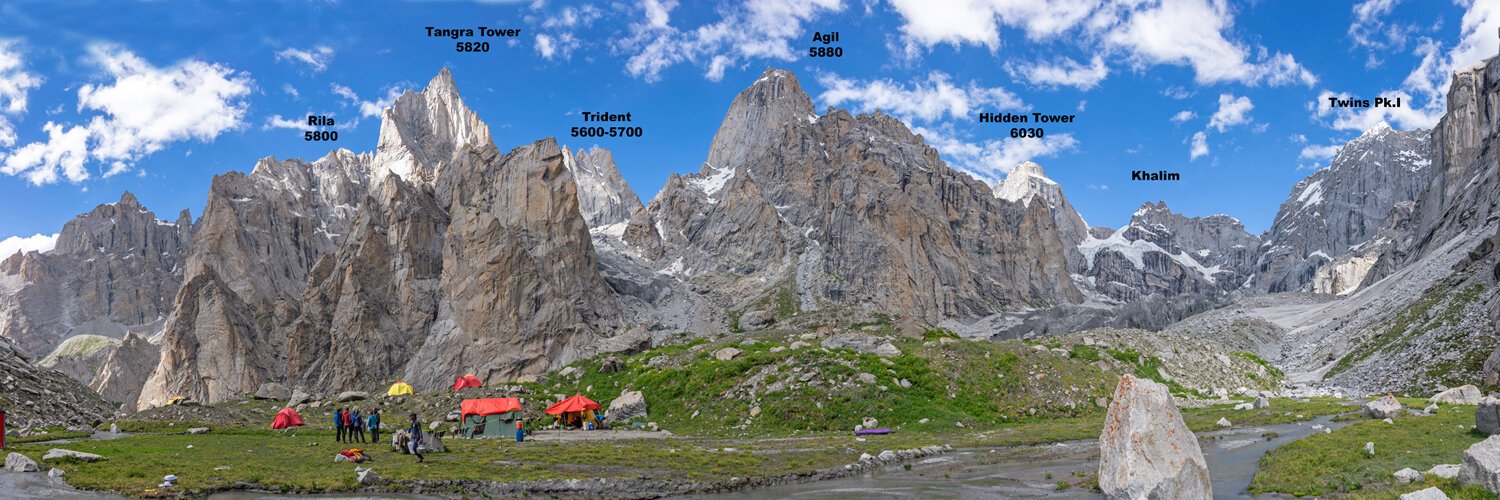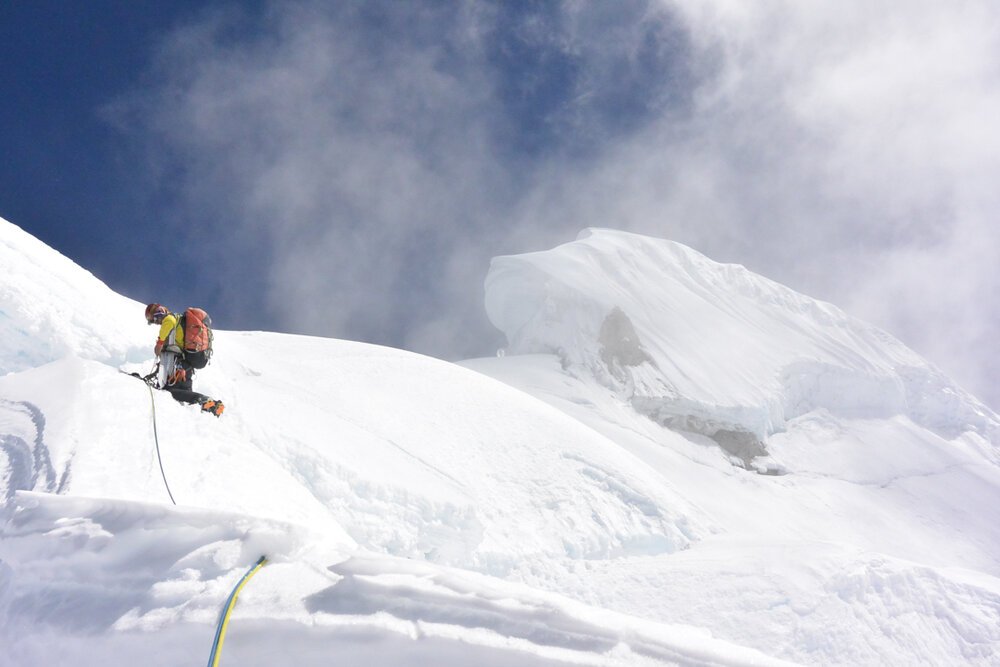Babsi Zangerl high on Free Rider during her first flash ascent of El Cap. Photo by Miya Tsudome for Highpoint Productions.
BABSI ON FREE RIDER—THE PODCAST
Babsi Zangerl’s flash ascent of Free Rider on El Capitan in November—the first flash of any El Cap big-wall free route—was a highlight of the year in climbing. In the new Cutting Edge podcast, the 36-year-old Austrian climber describes her preparation, fears, and the intense effort of her no-falls ascent of the 5.13a wall. Plus, Alex Honnold, Josh Wharton, and AAJ editor Dougald MacDonald add personal perspective and context on Babsi’s historic Free Rider ascent. Listen to the new episode here!
Yawash Sar I (6,258m) in far northern Pakistan. The round-trip from base camp took seven days. Photo: Janusz Majer.
FOWLER-SAUNDERS IN PAKISTAN
Two of the most accomplished and adventurous climbers of the modern era are Mick Fowler, a retired tax inspector for Great Britain’s revenue department, and Victor Saunders, a U.K. architect turned Chamonix mountain guide. The two completed their first major new route in Pakistan together 37 years ago. This past autumn, Fowler, now age 68, and Saunders, 74, completed another big new route: the first ascent of a 6,258-meter peak, also in Pakistan. Read on to learn more about both climbs.
YAWASH SAR I, FIRST ASCENT
Victor Saunders (left) and Mick Fowler in Pakistan. Photo by Mick Fowler.
In September 2024, Victor Saunders and I made the first ascent of Yawash Sar I (6,258m), a shapely peak at the head of the Koksil (a.k.a. Shop Dur) Glacier in the Ghujerab Mountains, very near the frontier with China. [In 2022, a British team made three attempts on the south face and southern ridges of Yawash Sar I, on the opposite side of the mountain. (See AAJ 2023.) No prior attempt from the Koksil Glacier, which drains to the northwest, has been reported.]
Victor and I met in Islamabad on August 26, flew to Gilgit, spent a night in Karimabad, and arrived at Koksil (ca 4,000m), 12 kilometers west of Khunjerab Pass on the Karakoram Highway, on the 28th. Bad weather delayed us for a day, but on the 30th, after one day of walking, we established a base camp at around 4,600 meters on the highest grassy meadows below the Koksil Glacier.
You call this a retirement home? Fowler at the cramped first bivouac on Yawash Sar I. Photo by Victor Saunders.
The weather was unstable over the period from August 31 to September 9. However, we were able to make a reconnaissance of the approach to Yawash Sar and get good views of its north and northwest flanks. During this period, to aid acclimatization and get more views of Yawash Sar, we ascended Peak 5,636m, first climbed by a Polish-Italian team in 2011 (see AAJ 2012).
On September 10, we left base camp to attempt our main objective. That day we walked up the main Koksil Glacier to camp at a point below the 5,426m West Yawash Col. On the 11th we climbed through an icefall to gain the previously unvisited glacier basin between Yawash Sar I and Peak 6,072m.
The west-northwest face of Yawash Sar I has three groove/couloir lines. We climbed the central one. On September 12, we crossed the bergschrund and were pleased to find excellent conditions. Once established on the line, we climbed thin ice runnels to a bivouac at about 5,750m. There was a notable dearth of good bivouac sites, and we had to traverse about 35m out of the couloir to a point where we were able to fashion a ledge on a sharp rock crest. On the 13th, we climbed more thin ice streaks and mixed ground to meet the southwest ridge at about 6,050m. Here, we endured a very uncomfortable and windy sitting bivouac.
Saunders arriving at a belay on Yawash Sar I. The high summit on the left is unclimbed Peak 6,072m. Photo by Mick Fowler.
On the 14th the weather deteriorated, and it began to snow. We traversed left across a rock wall (where we’d been concerned we might be stopped) and gained the summit slopes, which we followed to the top, arriving at around 11 a.m. We stayed about five minutes and then rappelled all the way to the bottom of the face, reaching the glacier at about midnight on the same day. On the 15th and 16th, we returned to base camp.
The upper reaches of the Koksil Glacier had only been visited by one previous party, the Polish/Italian team noted above, and numerous possibilities for climbers remain.
— Mick Fowler, U.K.
Much of the Golden Pillar of Spantik consisted of thin ice or powder snow over marble slabs, making for long runouts and very insecure climbing. Photo by Victor Saunders from AAJ 1988.
THE GOLDEN PILLAR OF SPANTIK
If the Piolets d’Or had existed at the time (they didn’t debut until 1992), Mick Fowler and Victor Saunders’ ascent of the Golden Pillar of Spantik (7,027m) in 1987 surely would have earned them a golden ice axe. Their six-day climb of the 2,100m northwest face was a landmark of late-’80s alpinism, with bold climbing in unstable weather on a stunning formation, followed by a nerve-wracking descent on uncharted terrain. Here’s an excerpt from Saunders’ article in AAJ 1988, describing day four of the climb:
Photo from AAJ 1988 by Victor Saunders.
“By midday, we reached a large flat ledge, the top of a giant jammed block. There we made tea and relaxed until it occurred to us to look up. We were completely surrounded by overhangs. Fowler led an aid pitch to gain the lowest of a series of ramps. The lower ramps led to a shield, which was the other area of uncertainty for us. From Base Camp there had appeared to be no line around this feature, but a hidden chimney revealed itself at the end of the ramp. Because it was blank-sided and there was no belay at the top, I had to belay Mick by wedging my body across the chimney and asking him not to fall.
“I do not remember having a more miserable bivouac than the one we had that night. We were benighted and there was no ledge, nor even the possibility of cutting one on the thin ice. We used the tent as a hanging bag, inside of which Mick spent the night in his harness, while I stood in my rucksack. It snowed all night.”
There’s much more to enjoy in this classic AAJ story: Read it here. To see the story in its original format, download the PDF (icon in upper right of the web page.)
FOWLER AND SAUNDERS: FURTHER READING
Fowler and Saunders have published many articles and books, replete with wild adventures and Brit-style self-deprecating humor. For tales from Fowler’s early years, turn to his 1995 book Vertical Pleasure: The Secret Life of a Tax Man. Saunders’ 1990 book Elusive Summits (winner of Britain’s Boardman Tasker Prize) is probably his best. Both books describe the landmark Spantik ascent.
The Line is the newsletter of the American Alpine Journal (AAJ), emailed to more than 80,000 climbers each month. Find the archive of past editions here. Interested in supporting this publication? Contact Heidi McDowell for opportunities. Got a potential story for the AAJ? Email us: [email protected].









